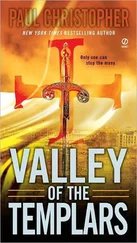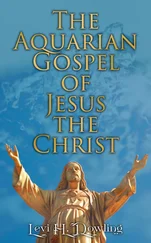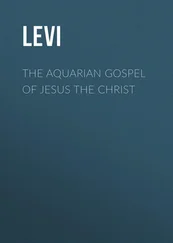Paul Christopher - The Lucifer Gospel
Здесь есть возможность читать онлайн «Paul Christopher - The Lucifer Gospel» весь текст электронной книги совершенно бесплатно (целиком полную версию без сокращений). В некоторых случаях можно слушать аудио, скачать через торрент в формате fb2 и присутствует краткое содержание. Жанр: Триллер, на английском языке. Описание произведения, (предисловие) а так же отзывы посетителей доступны на портале библиотеки ЛибКат.
- Название:The Lucifer Gospel
- Автор:
- Жанр:
- Год:неизвестен
- ISBN:нет данных
- Рейтинг книги:5 / 5. Голосов: 1
-
Избранное:Добавить в избранное
- Отзывы:
-
Ваша оценка:
- 100
- 1
- 2
- 3
- 4
- 5
The Lucifer Gospel: краткое содержание, описание и аннотация
Предлагаем к чтению аннотацию, описание, краткое содержание или предисловие (зависит от того, что написал сам автор книги «The Lucifer Gospel»). Если вы не нашли необходимую информацию о книге — напишите в комментариях, мы постараемся отыскать её.
The Lucifer Gospel — читать онлайн бесплатно полную книгу (весь текст) целиком
Ниже представлен текст книги, разбитый по страницам. Система сохранения места последней прочитанной страницы, позволяет с удобством читать онлайн бесплатно книгу «The Lucifer Gospel», без необходимости каждый раз заново искать на чём Вы остановились. Поставьте закладку, и сможете в любой момент перейти на страницу, на которой закончили чтение.
Интервал:
Закладка:
“He had your digital camera. If he hasn’t got it figured by now it won’t be long.”
They climbed back into the car and drove beneath the arching sign. They parked in an old gravel lot beside what might have once been a snack booth or a gift shop. Behind it was a makeshift row of outhouses. Grass had grown up everywhere. The hinges on the big front flap of the snack booth had rusted through and the flap sagged like old skin. A little to the left on a small rise of land was the farmhouse. The roof sagged and the chimney had collapsed. It was a blind and dead place. The front yard was a sea of brambles, with the wreck of an old truck by the front door, an International Harvester Scout, blue and white and rust. The tires were rotted away and the cracked windshield was covered in bird droppings. Everything was gray in the rain.
“Twilight Zone,” murmured Hilts, looking out across the parking lot. At the far end was the burnt-out hulk of what might have been a school bus.
“I was thinking more along the lines of Nightmare on Elm Street.”
“Part twenty-six: Jason Takes Rutgers Bluff.”
“So what do we do now?” said Finn.
“Check it out. See if this was what Devereaux really found.”
“Is there anything about this place in the guidebook you bought?”
They’d picked up a local guide in the same place they’d bought the ponchos and the rest of their things. Hilts picked the small booklet up off the dashboard and leafed through it.
“Fourth Chute, Winter River. First discovered by English cabinet-maker and infamous drunkard Tom Woodward in 1829. Woodward fell down a sinkhole and had a vision of the Redemption after being trapped in the lightless caverns for six days. For the rest of his life Woodward decorated the caves in a glowing tribute to his religious conversion and sobriety. His Shrine of the Holy Mother in the Ninth Grotto has been the site of several miraculous and unexplained natural and unnatural events. Ten-dollar admission. Includes prayer pamphlet and glow-in-the-dark Caverns of Wonder key tag. Bus Tours welcome. Parking. Refreshments.” Hilts closed the book. “Natural and unnatural events.”
“Glowing key tag.”
“This is not what Devereaux discovered.”
“Yes, it is,” said Finn. “At least part of it. He died leaving a clue to this place. There must have been a reason.”
Hilts sighed. He reached across her and took a flashlight out of the glove compartment. “Come on.”
She followed him out of the car and into the grinding rain. It was the kind of rain Noah must have faced; not much in itself, but relentless, as in Northern Ireland, where it hasn’t stopped raining for a thousand years, merely paused from time to time. They crunched across the parking lot to the screen of trees and the burnt-out bus. On closer inspection, she thought the bus had probably been the source of the Refreshments mentioned in the guide. The remains of a scorched metal sign offered hot dogs, Stalactite Burgers, Stalagmite Chili, and fresh-cut Bat Fries. A path to one side led between the trees and down a rocky path that led toward the river.
“Listen,” said Finn, putting a hand out and grabbing Hilts’s arm.
They paused.
“I don’t hear anything,” he said. “The rapids. The rain.”
“Keep listening.” Deep behind everything else was a steady chattering sound, muffled and distant. Every few seconds there was a stuttering thump.
“What is it?” said Hilts, finally hearing it. “A generator?”
“A pump,” said Finn, after a long moment. “A sump pump, like the ones they use on flooded basements.”
“Down in the Wonder Caves?”
“Caverns of Wonder,” corrected Finn.
“Whatever.” The photographer sighed.
“Maybe something automatic that starts up when it rains.”
“I’d like to see that warranty,” scoffed Hilts. “Nobody’s had this place as a going concern for years. Decades maybe.”
They were headed downward, the trail actually becoming a set of steps cut into the stone. Hilts saw a crushed and flattened soda tin on the ground and picked it up. Recognizably Coca-Cola. Even in its condition it was obvious that it had been opened with an old-fashioned spear can opener. “How long ago were zip tops invented anyway?” He threw the can into the bushes.
“In 1962,” said Finn. “A guy named Ermal Fraze from Dayton. My mother went to grade school with him. I wrote a paper about it for an archaeology class: ‘Interpretation of the Zip Top opener as ornament or tool; aids for the historian of the future.’ I got an A.”
“You should have been committed. Ermal Fraze?”
“Ermal Fraze,” she said and nodded. “Strickley Elementary School. Mom says they have a plaque. Girl Guides Honor.” The steps flattened into a broad plateau overlooking the rapids and the quieter water beyond. Half shrouded by young sugar maple saplings, wet green in the rain, was the entrance to the Caverns of Wonder. The bare limestone above it showed undulating cakey layers filled with dirt and moss, slick and muddy. The entrance itself had been squared off with timbers so old they seemed part of the stone around them. There were the remains of a heavy plank door, but it had long ago been torn off its hinges. There was a sign over the entrance like the one on the gate, only smaller, branches nailed to plywood, the upright for the D in Wonder missing so it read CAVERNS OF WONCER. Rainwater was running down the squared log steps leading down to the hole. There was a handrail made of a gray, dead and rotted spruce bough.
“Looks wet,” said Hilts
“That’s because it’s raining,” replied Finn. “It’ll be drier inside.”
“Famous last words.”
“Are you coming or not?”
“Lead on.”
Finn went down the steps carefully, holding on to the rail. Hilts was close behind. As she passed beneath the entrance he snapped on the flashlight. There were more steps beyond and a maze of supports and roof beams. The steps went down into darkness. It looked more like an abandoned mine shaft than a holy grotto. So far she hadn’t seen anything even faintly religious. Her mind flailed around desperately trying to find some connection between an old limestone solution cave on the banks of a raging river in southern Illinois and a gold medallion in the possession of a mummified corpse in the Libyan Desert.
Based on the actions of Adamson and his colleagues the connection was more than tenuous-in fact, it was as solid as a steel bar. Solid enough for them to kill for, and more than once.
The steps ended and became a meandering boardwalk through a series of roomlike openings that were barely worthy of the word “cave,” let alone “cavern.” It looked as though at some point the Winter River or some tributary of it had cut through the rocks and over time had worn a narrow pathway, rarely wider than an arm span. Here and there along the walkway were stalactites and stalagmites and lavalike tables of accreted stone, but for Finn, who had been raised in a world of Mayan tombs and subterranean archaeological sites, the Rutgers Bluff Caverns of Wonder were pretty small potatoes. A minor show cave or roadside attraction, like the giant concrete egg she’d once seen in Men-tone, Indiana, or seven-story concrete statues of Jesus in Arkansas. What was here that could have affected the outcome of World War Two or interested anyone in the Vatican? It was absurd.
“There,” said Hilts.
“What?” she answered, stopping as his voice brought her away from her thoughts. He switched off the flashlight. Suddenly the narrow, arched cave they were standing in was alive with green, glowing images.
“Glow-in-the-dark key tags,” said Hilts. A goggle-eyed Jesus looked down from a stalactite. Mary prayed by a pool of stone. Fish swam across the ceiling with teeth like sharks’ and tails like guppies’. The Sermon on the Mount was rendered in knobs and blobs of stone painted with staring faces, and banners were crudely lettered with quotations from Scripture.
Читать дальшеИнтервал:
Закладка:
Похожие книги на «The Lucifer Gospel»
Представляем Вашему вниманию похожие книги на «The Lucifer Gospel» списком для выбора. Мы отобрали схожую по названию и смыслу литературу в надежде предоставить читателям больше вариантов отыскать новые, интересные, ещё непрочитанные произведения.
Обсуждение, отзывы о книге «The Lucifer Gospel» и просто собственные мнения читателей. Оставьте ваши комментарии, напишите, что Вы думаете о произведении, его смысле или главных героях. Укажите что конкретно понравилось, а что нет, и почему Вы так считаете.










